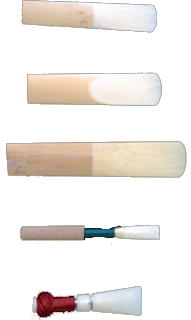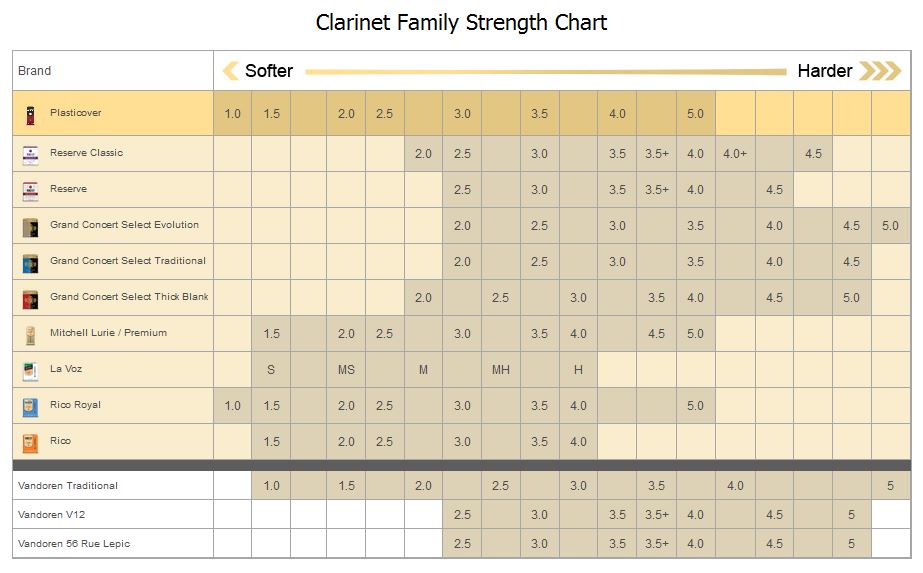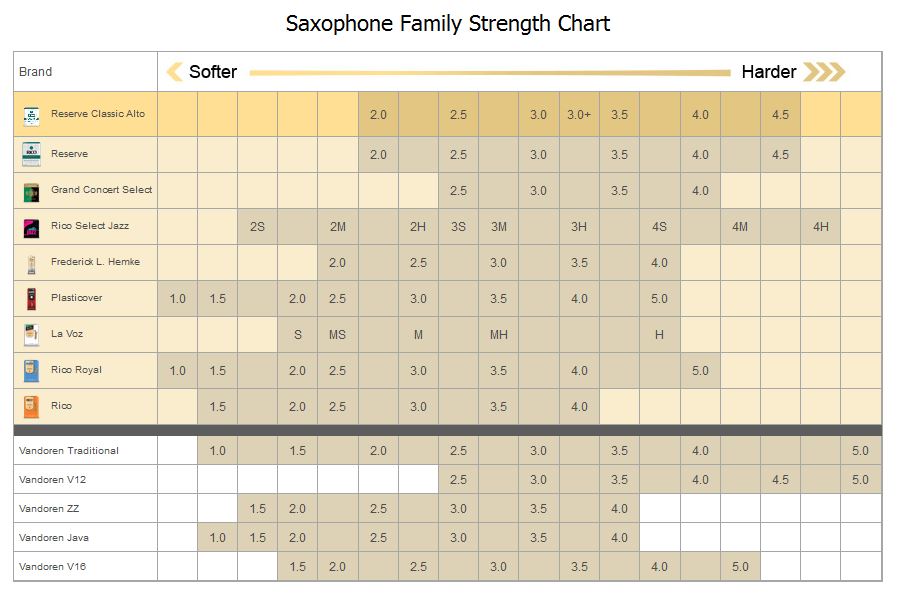Your shopping cart is currently empty.
If you have not already done so, you can login to your account to see any items that may be saved in your cart. Once logged in, you may also add items to the cart that you saved previously to your wishlist.

A reed is used to create the vibration necessary to produce sound on most woodwind instruments. Most reeds are made from a type of thick grass that grows primarily in southern France and areas of similar climate. Reeds can be made of synthetic materials, but most players consider the tone quality produced by them inferior to that of natural reeds. Because the mouthpieces of instruments are different sizes, reeds are instrument specific; you cannot use a clarinet reed on an alto saxophone, or vice versa.
When purchasing reeds you will be asked to specify what "strength" of reed you need. The strength of a reed is not about size but rather a measurement of density and flexibility. Generally, single reeds are labeled on a scale of 1 to 5 in increments of half sizes (1 being softer than 5), while double reeds (used by oboe, English horn, and bassoon) are labeled soft, medium-soft, medium, medium-hard, or hard. Reed strengths can vary between manufacturers. (For example, a Rico 2 is more flexible than a Vandoren 2.)
Most teachers recommend that a first-year musician use a 2 or 2.5 (soft or medium soft) reed. Anything stiffer may make it difficult to produce a sound while anything more flexible may produce a weak sound. As the muscles around the mouth grow stronger with practice, switching to a stiffer reed can help improve tone quality and intonation, especially for high notes. Your teacher should let you know when it is time to switch to a different strength reed.
Keep in mind that the brand of mouthpiece being used may affect the reed strength needed for optimal performance, and of course the style of music being played makes a difference as well.
Some reeds are filed and some are unfiled. The following explanation of the difference is from D'Addario, a leading reed manufacturer:
An option to fine-tune the sound, the file is often preferred by players who use traditional, moderately resistant, dark-sounding mouthpieces; the file helps such mouthpieces blow more freely. For those who play relatively easy-blowing, moderate-to-bright mouthpieces (especially jazz or pop sax mouthpieces with a high baffle), an unfiled reed is usually preferred. The French File (or “file”) is the area behind the vamp (or cut portion) where the bark is sanded off in a straight line. The file provides ease of response, especially in the low register, making soft attacks easier. It also makes the tone slightly brighter for use with resistant mouthpieces. An unfiled reed provides a darker tone and more resistance; a filed reed provides a brighter tone and is more free-blowing.
See explanatory photo
There are many different brands of reeds available to a player. Once basic skills have been developed, it can be worthwhile to try different brands of reeds to see which reed creates the desired sound. Reed brand and strength is a personal choice; there is no one "right" reed to use. Your music teacher or private instructor can help lead you through the process of finding the brand and strength of reed that best fits you.
The charts below, courtesy of D'Addario, show the relative strength of various clarinet and saxophone reeds.
 |
 |